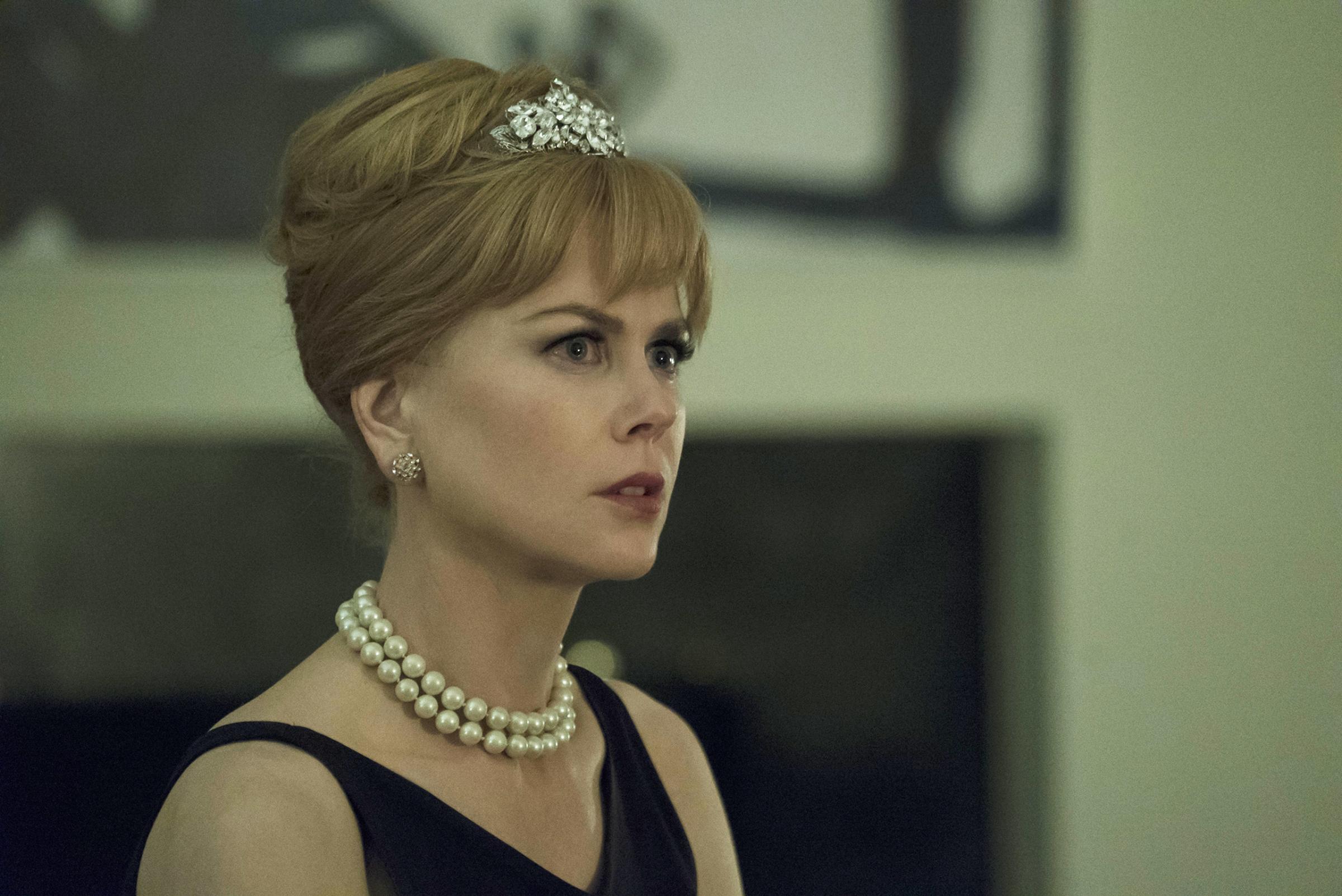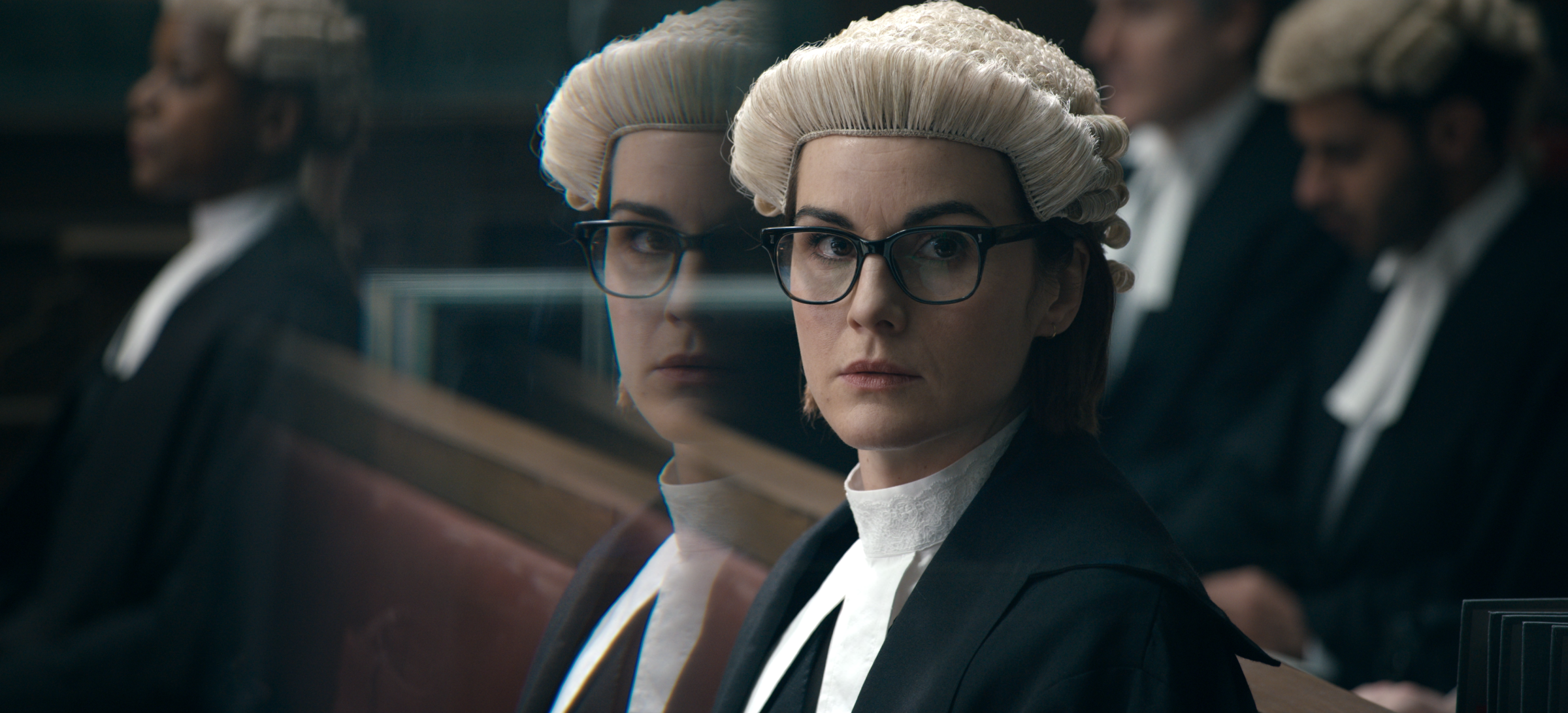Are you beautiful? Rich? White? Female? Do you happen to be married, with kids, to a charming, successful man? Have your professional aspirations taken a backseat to his? Could your home have been ripped from the pages of Architectural Digest? Do you bear a striking resemblance to Nicole Kidman?
If you answered yes to more than five of these questions, then I regret to inform you of the extremely high probability that you are the protagonist of a David E. Kelley rich-oblivious-wife drama. And that husband, the one you’re so desperately in love with? I’m so sorry, but I’m here to say that he did every bad thing you’re starting to suspect him of doing—and, probably, more.
First there was Big Little Lies, on HBO, which cast Kidman as a rich Monterey wife and mother whose abusive husband (Alexander Skarsgård) turns out to be mixed up in even nastier business than she knows. Then there was The Undoing, one of HBO’s many attempts to replicate Lies, which re-teamed Kelley and Kidman in a psychological thriller about a rich Manhattan therapist who can’t get it through her head that her philandering husband (Hugh Grant) is a psychopath. Clearly, this kind of premise has struck a nerve with viewers, because on April 15, Kelley and co-creator Melissa James Gibson (House of Cards) cross the Atlantic with Anatomy of a Scandal, a Netflix courtroom drama that stars Sienna Miller as a rich London mum whose dashing politician husband (Rupert Friend) becomes embroiled in a sex scandal.

Like its predecessors, Anatomy adapts a best-selling novel by a female author—in this case, Sarah Vaughan’s book of the same name. And like The Undoing, it’s a pale imitation of Lies, photocopying that show’s saga of marital deception and male monstrousness without expending the same effort to develop characters and flesh out a community. When we meet the Whitehouses—Miller’s Sophie, Friend’s James, and a little blond son and daughter who worship their dad—they are the young, attractive, blue-blooded platonic ideal of a conservative MP’s family. James wears his aristocratic exceptionalism without shame. “What’s the thing about Whitehouses?” he likes to quiz his kids. The correct answer: “We always come out on top!”
In another exchange typical of the show’s on-the-nose dialogue, Sophie greets an acquaintance at a cocktail party with the pleasantry: “What could be bad on this beautiful day?” She finds out almost immediately. James calls her home to confess that he had an affair with an underling, Olivia Lytton (Naomi Scott), and the story has just been leaked to the press. Although she’s upset enough to vomit a bit on a photo of Olivia she’s called up on her phone, there’s no real question that Sophie will stick by her husband. That’s what women like her do. But then the other shoe—or, to give the show’s unfeasibly twisty plot its due, the second shoe out of a rack filled to capacity—drops. Olivia has filed rape charges against James, alleging that their final sexual encounter, one blurrily depicted in the premiere’s opening scene, was not consensual.

As Sophie’s ordeal plays out, Anatomy also follows the prosecutor assigned to James’ case, Kate Woodcroft (played by Michelle Dockery, as part of her career-long project of portraying TV’s most stereotypically English characters). A workaholic with a tough reputation, the character initially seems shoehorned into a story to which her personal life is extraneous. But the show makes a case for Kate’s inclusion by setting her up as a foil to Sophie—the compliant, upper-crust housewife and mother vs. the headstrong, hard-working, middle-class feminist.
Although there’s more to Kate than meets the eye—just like there’s more to the bond that keeps the Prime Minister (Geoffrey Streatfeild), James and Sophie’s Oxford classmate, loyal to his old friend—her seemingly extraneous scenes drag down the first half of the six-episode season. Director S.J. Clarkson, who also directed the fantastic British thriller Collateral, counters the uninspired script with flourishes meant to convey Sophie’s internal turmoil. Shortly before spewing literal bile on Olivia’s headshot, she flashes back to a windblown family beach day, with the Whitehouses decked out in beige and sweaters, that could be a Burberry ad. Most episodes end with a splashy effect: unmoored by some new revelation, characters float through the air, or the frame spins as Sophie and James argue, underlining the instability of their marriage. Miller is no Kidman, but she’s cast well enough here to obviate the need for such pretentious gimmickry.
In fact, the acting is uniformly good. Dockery and Friend are pros, playing parts well within their respective comfort zones; lesser-known actors like Kudzai Sitima (as Kate’s protégé) and Kathryn Wilder (as Olivia’s confidant) make strong showings in smaller roles. The fault for Anatomy’s broadness—and certainly for the silliest twist this side of Netflix’s even messier marital thriller Behind Her Eyes—lies mostly with writing that tweaks characters to fit the plot, rather than the other way around. Here and in The Undoing, it’s as though Kelley is relying on viewers to extrapolate personalities and motivations from the analogous, genuinely complex characters he (building on author Liane Moriarty’s foundation) constructed for Big Little Lies.

There is real insight at the heart of the rich-oblivious-wife plot. These three series, like their cousins in the crazy-wife thriller subgenre (Gone Girl, The Girl on the Train, The Woman in the Window), magnify the gendered woes of heterosexual marriage to criminal proportions. Kelley’s unofficial trilogy is actually more broad-minded and insightful than the crazy-wife oeuvre, whose narratives rarely dig into said wives’ prototypical whiteness and relative wealth. Whether they turn out to be rapists or just cads, the husbands in Kelley’s shows are always unfaithful—so it’s always the wife who initially appears to be the primary injured party.
But as the series unfolds, we learn about the other woman. She is invariably younger, poorer, nonwhite, or some combination of the three, and her suffering makes the wife’s pain look petty. Moreover—and especially in Anatomy of a Scandal, which pounds home ideas that the first season of Lies patiently floated—the rich, oblivious wife is shown to be passively complicit in her spouse’s abuses. She isn’t just oblivious to his infidelity, you see; she’s also, and more importantly, oblivious to her privilege as the high-status woman he must at least pretend to love and respect. The rich, oblivious wife is an unwitting victim and an unwitting perpetrator at once.
This is a fairly accurate metaphor for the awkward position white women are seen to occupy in contemporary society, with additional culpability assigned for heterosexuality, affluence, able-bodiedness, conventional beauty, and other competitive advantages. It’s that ambivalence that keeps so many viewers, and particularly so many women of all identities, hooked on Kelley’s rich-oblivious-wife shows, even as these stories’ returns keep diminishing. We might come for the starry casts and hold-my-beer twists, but we stay for explorations of the moral ambiguities of white womanhood and its proximity to white masculinity that are delivered as meditations more than lectures. There is, without a doubt, much more left to say on the topic—which is why it’s such a shame to see Kelley keep repeating himself.
More Must-Reads from TIME
- Donald Trump Is TIME's 2024 Person of the Year
- Why We Chose Trump as Person of the Year
- Is Intermittent Fasting Good or Bad for You?
- The 100 Must-Read Books of 2024
- The 20 Best Christmas TV Episodes
- Column: If Optimism Feels Ridiculous Now, Try Hope
- The Future of Climate Action Is Trade Policy
- Merle Bombardieri Is Helping People Make the Baby Decision
Contact us at letters@time.com